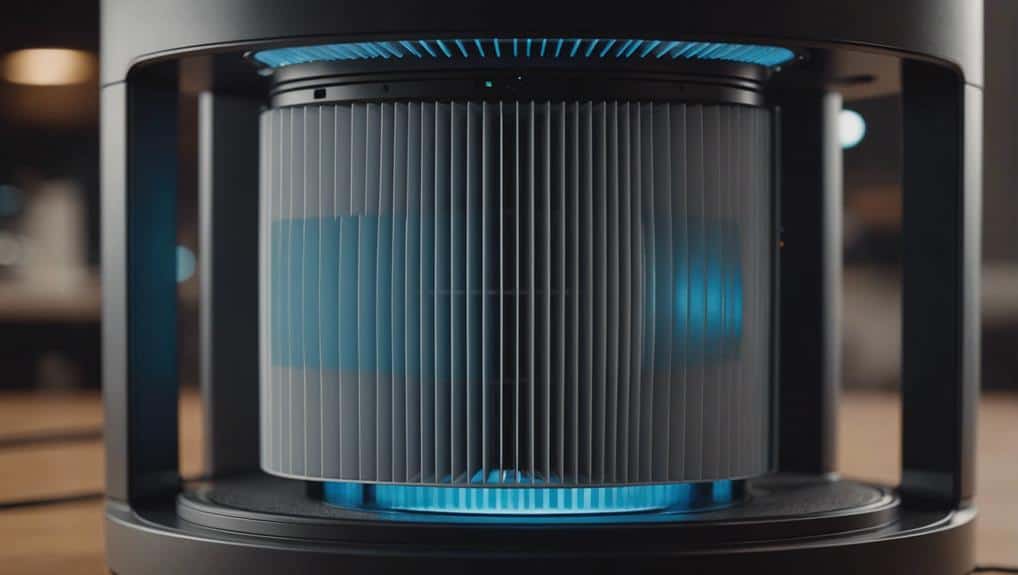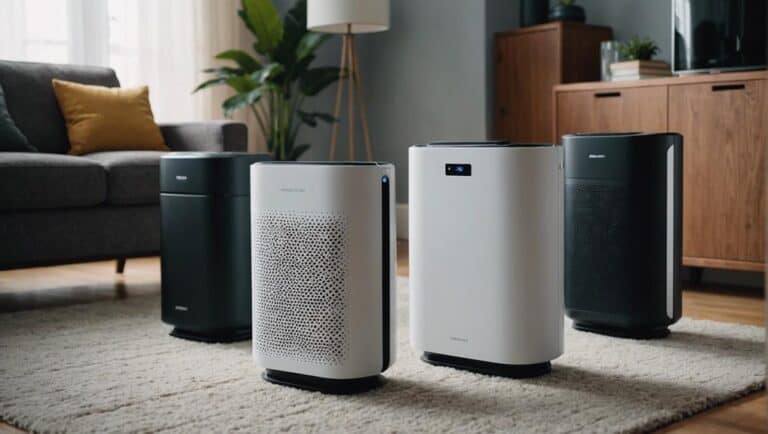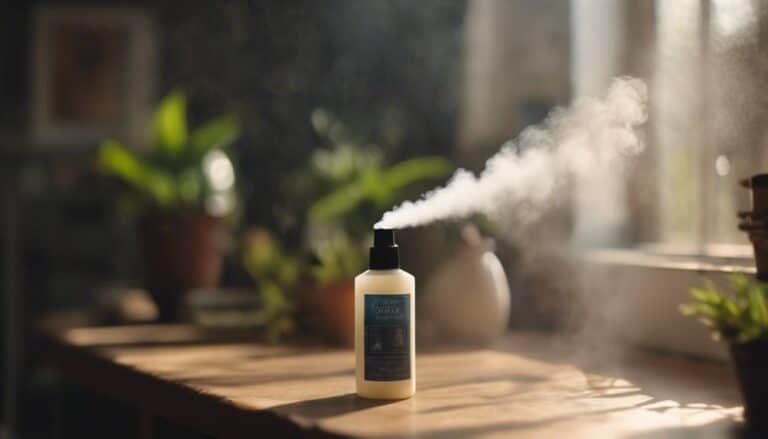How Does the Air Purifier Mechanism Work?
When considering how air purifiers operate, it’s fascinating to observe the intricate process they employ to cleanse the air we breathe. The way in which these devices function, from the initial intake of contaminated air to the final release of purified air, involves a series of sophisticated mechanisms working seamlessly together. Understanding the inner workings of an air purifier not only sheds light on its efficiency but also prompts us to reflect on the importance of clean air in our daily lives.
Air Purifier Basics
Air purifiers work by drawing in polluted air and passing it through a series of filters to remove contaminants before releasing clean air back into the room. The process begins with a pre-filter that captures larger particles like dust and pet dander, followed by a carbon filter that absorbs odors and volatile organic compounds (VOCs). The final stage involves a HEPA filter, which effectively traps smaller particles such as pollen, mold spores, and bacteria.
To guarantee efficient purification, air purifiers utilize fans to circulate air through the filters, optimizing the removal of pollutants. This continuous air flow mechanism ensures that clean air is distributed throughout the room while polluted air is constantly drawn in for filtration. Maintaining proper air flow is vital for the effective operation of the air purifier, as it dictates how efficiently contaminants are removed from the indoor environment.
HEPA Filter Function
With its ability to capture particles as small as 0.3 microns, the HEPA filter plays an essential role in enhancing indoor air quality. HEPA filters are highly efficient in trapping various particles like dust, pollen, mold, and bacteria, boasting an impressive 99.97% capture rate.
The dense fiber structure of HEPA filters enables them to effectively capture even the tiniest of particles, making them a pivotal component in air purifiers. By incorporating HEPA filters, air purifiers can greatly reduce allergens and pollutants in the air, promoting a cleaner and healthier indoor environment.
For individuals with allergies, asthma, or respiratory conditions, HEPA filters are indispensable due to their superior filtration capabilities. Recognized as the gold standard in air filtration technology, HEPA filters are widely used for their exceptional performance in removing airborne particles, making them a cornerstone in the functionality of air purifiers.
Electrostatic Precipitation Technology
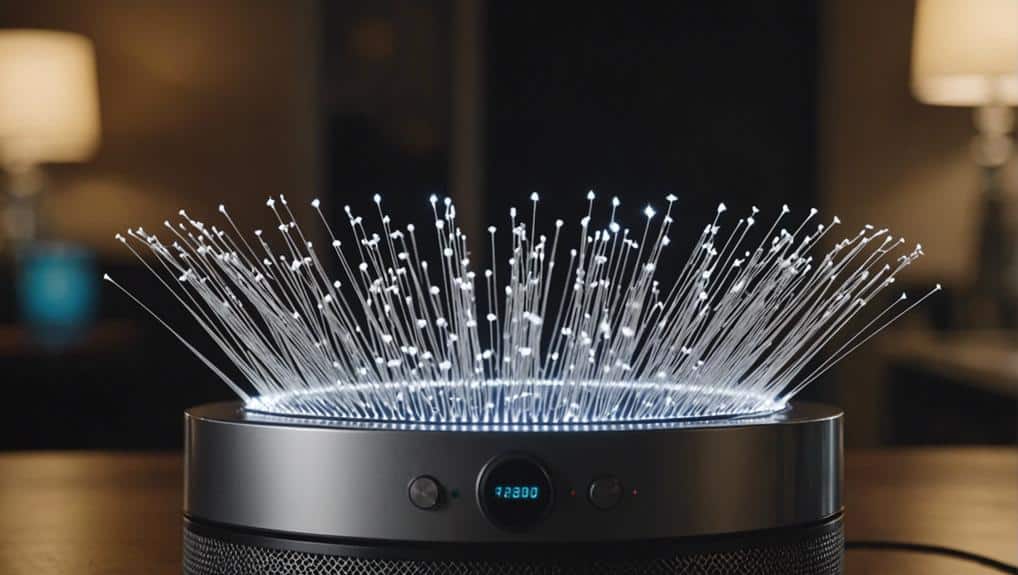
Utilizing high-voltage wires, electrostatic precipitating cleaners attract particles in the air to enhance indoor air quality. These electrostatic precipitators work by imparting an electrostatic charge on the filter media, causing particles like dust, allergens such as pet dander to be captured efficiently.
This technology is particularly effective in trapping fine particles that may escape other types of filters. By incorporating electrostatic precipitation technology into their design, Blueair air purifiers offer a powerful combination of HEPA and electrostatic media filter technologies, resulting in enhanced filtration capabilities.
This advanced technology enables the air purifier to capture a wide range of airborne pollutants, ultimately contributing to a cleaner and healthier indoor environment. If you desire control over the quality of the air you breathe, investing in an air purifier equipped with electrostatic precipitators can be a proactive step towards achieving cleaner and fresher indoor air.
Negative Ion Generation Process
Incorporating negative ion generation technology in air purifiers enhances their ability to attract and neutralize airborne particles efficiently. Negative ion generators produce negatively charged ions that act as magnets for airborne particles, particularly positively charged ones like dust and allergens. Here’s how this process works to improve air quality:
- Negatively charged ions are released into the air by the air purifier.
- These ions attach themselves to positively charged particles present in the air.
- The attached ions cause the particles to clump together, making them heavier and eventually fall out of the air.
Air Circulation Mechanism
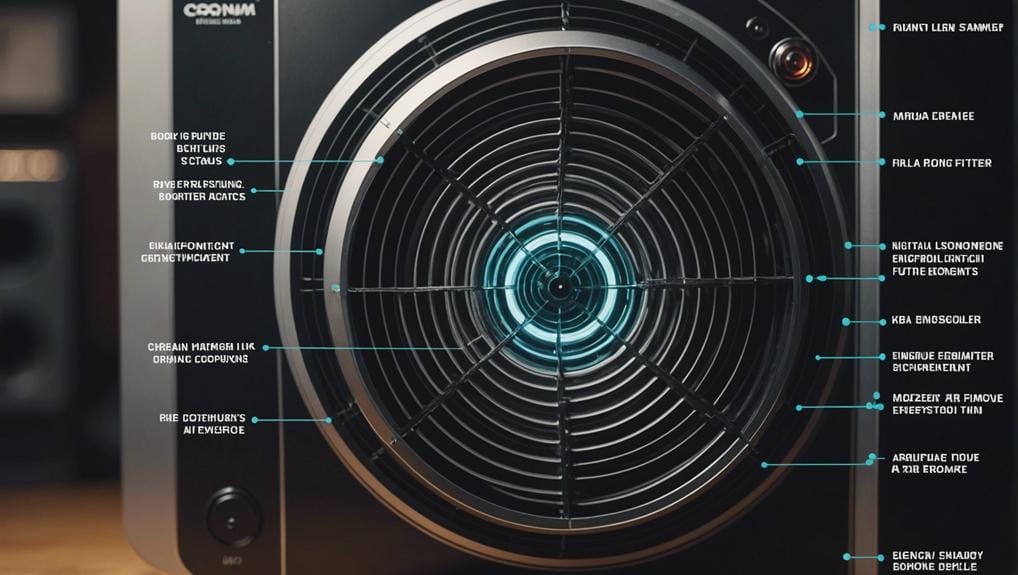
To optimize air quality, air purifiers utilize an efficient air circulation mechanism that involves drawing polluted air in through filters and releasing purified air back into the room for improved indoor air quality.
As the air purifier operates, air passes through a pre-filter, which captures larger particles like dust and hair. Subsequently, the air moves through a HEPA filter, where finer particles such as pollen and smoke get trapped. The filtered air is then released at the top of the air purifier, ensuring that it circulates effectively throughout the room.
This continuous process helps maintain a constant level of clean, purified air, contributing to a healthier indoor environment. By understanding how air purifiers work to circulate filtered air, individuals can take control of their indoor air quality and create a more comfortable living space.
Particulate Matter Removal
When it comes to particulate matter removal, filter technology plays a vital role in enhancing air quality.
HEPA filters efficiently capture tiny particles, while pre-filters target larger debris like dust and pet hair.
Filter Technology
Filter technology plays a crucial role in air purifiers, effectively removing particulate matter from the air. HEPA filters are essential for capturing particles as small as 0.3 microns, while activated carbon filters absorb gases and odors.
Pre-filters target larger particles, extending the lifespan of main filters and enhancing efficiency. Electrostatic precipitators provide an additional layer of filtration by attracting and trapping particles using high-voltage wires.
Combining these technologies in air purifiers guarantees thorough air purification. Different models may utilize HEPA, carbon, and electrostatic filters to cater to various air quality needs. Understanding the filter technology in air purifiers empowers users to customize their air purification experience for best results.
Air Quality Improvement
Improving air quality through the removal of particulate matter is a key function of air purifiers. HEPA filters, capable of trapping particles as small as 0.3 microns, efficiently capture allergens and viruses, enhancing indoor air quality.
Carbon filters play an essential role by absorbing odors and volatile organic compounds, ensuring cleaner air is circulated back into the room. The filtration process involves pre-filters that target larger particles such as dust and pet dander, further contributing to a healthier environment.
Odor Elimination Process
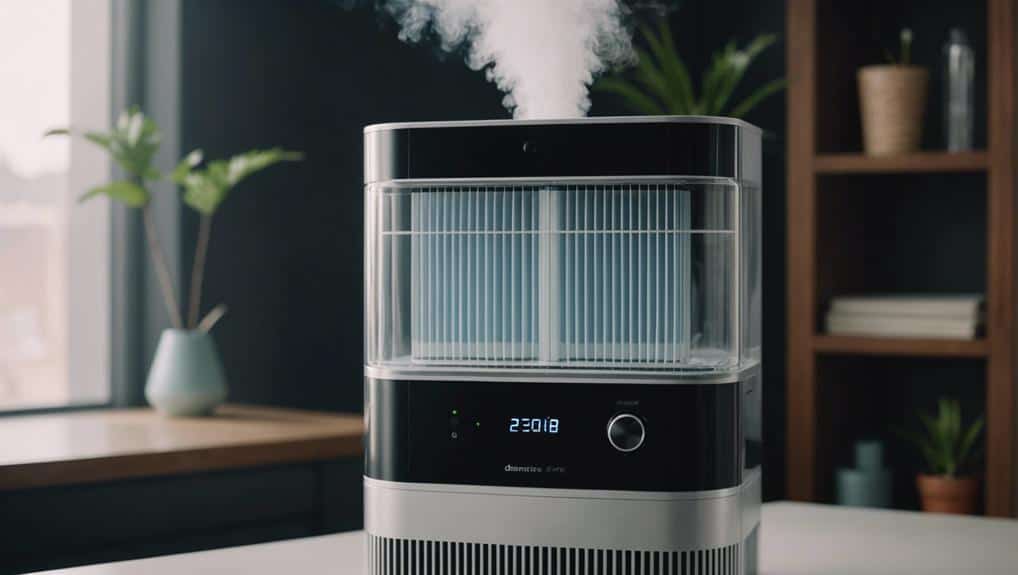
To eliminate odors effectively, air purifiers utilize activated carbon filters that absorb and neutralize odor-causing molecules within the air. Activated carbon is highly efficient in trapping volatile organic compounds (VOCs) responsible for unpleasant smells in the indoor environment. This process helps maintain a fresh and clean atmosphere by targeting specific compounds that contribute to odors.
Activated carbon filters have a large surface area that binds to odor-causing molecules, effectively removing them from the air.
The filtration process helps neutralize various odors like cooking smells or pet odors, enhancing the overall indoor air quality.
UV-C Light Sterilization
UV-C light is a powerful tool for sterilizing air and surfaces by destroying the DNA and RNA of harmful microorganisms. It effectively kills germs, bacteria, and viruses, contributing to a cleaner indoor environment.
Many air purifiers harness UV-C light technology to enhance air quality and reduce the spread of pathogens.
UV-C Light Kills Germs
Using short-wavelength ultraviolet light, air purifiers with UV-C technology effectively eradicate germs and pathogens to enhance indoor air quality. UV-C light targets and destroys harmful microorganisms, ensuring a cleaner and safer environment.
Here are three key points to take into account:
- UV-C light disrupts the DNA of germs, preventing them from replicating.
- This technology is particularly effective against viruses, bacteria, and mold spores.
- Air purifiers equipped with UV-C light help reduce the transmission of illnesses and promote a healthier indoor atmosphere.
Destroys Bacteria and Viruses
By disrupting the DNA structure of bacteria and viruses, UV-C light sterilization effectively eliminates harmful pathogens from the air and surfaces. UV-C light, known for its germicidal properties, plays a significant role in sterilizing indoor environments and improving indoor air quality. Hospitals and healthcare settings commonly utilize UV-C light technology to prevent the spread of infectious diseases. This chemical-free method provides efficient sterilization, making it a valuable addition to air purifiers. The table below highlights the key points of UV-C light sterilization:
| UV-C Light Sterilization |
|---|
| Destroys Bacteria |
| Eliminates Viruses |
| Germicidal Properties |
| Improves Air Quality |
| Sterilizes Surfaces |
Purifies Air Effectively
When we harness the power of UV-C light sterilization in air purifiers, we effectively purify the air by eliminating harmful bacteria, viruses, and pathogens.
UV-C light sterilization in air purifiers offers a robust method to sanitize indoor air. By combining UV-C light with HEPA filters, air purifiers can provide thorough air purification.
This technology works by damaging the genetic material of microorganisms, preventing them from reproducing and causing harm.
The use of UV-C light in air purifiers is a safe and efficient way to reduce airborne contaminants, ensuring a healthier indoor environment.
Smart Sensor Integration
Smart sensor integration in air purifiers plays an essential role in monitoring and improving indoor air quality. These smart sensors measure air quality parameters such as particulate levels and volatile organic compounds (VOCs), providing real-time data for efficient pollutant removal.
By utilizing light sensors, the air purifier can adjust its performance based on ambient light conditions, ensuring ideal operation throughout the day. Additionally, laser sensors offer quicker response times to changes in air quality, allowing for optimized purification processes.
Quality sensors are vital for ensuring that the air purifier reacts promptly to varying pollution levels, maintaining a consistently clean indoor environment. With the integration of these smart sensors, users have greater control over their air purifier’s performance, enabling them to make informed decisions based on real-time data for enhanced air quality.
Energy Efficiency Considerations
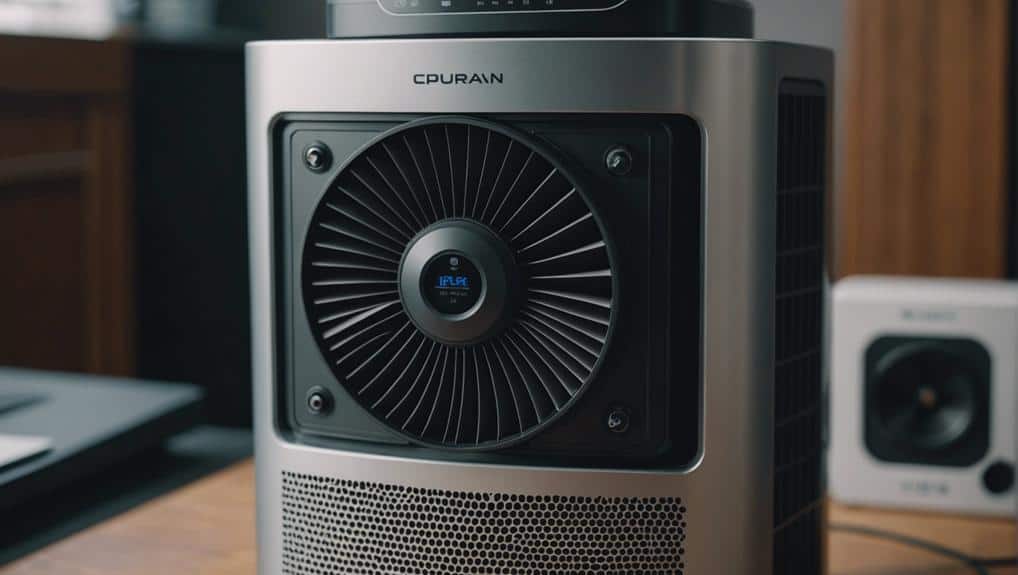
When considering air purifiers, we must prioritize energy efficiency for best performance. Understanding energy-saving technology and analyzing power consumption are critical aspects to evaluate.
Energy-saving Technology
Utilizing energy-saving technology, air purifiers are designed to minimize power consumption for efficient and sustainable operation.
- Efficient motors and fan designs optimize energy usage.
- Smart sensors adjust fan speed based on air quality, further saving energy.
- Energy-saving modes automatically adjust settings for conservation when air quality is at its best.
These features not only help in reducing electricity bills but also contribute to a greener environment.
By incorporating advanced technologies like smart sensors and energy-efficient components, air purifiers make sure that energy consumption is controlled and optimized, providing users with the ability to manage their energy usage effectively.
This focus on energy-saving technology reflects a commitment to both cost-efficiency and environmental responsibility in the design and operation of air purifiers.
Power Consumption Analysis
When evaluating power consumption for air purifiers, it’s important to take into account energy efficiency as a key factor in determining operational costs and environmental impact.
Air purifiers typically consume between 50 to 200 watts of electricity, with energy-efficient models using as little as 30 watts on low settings. Higher fan speeds and extra features like UV-C lights can increase power usage up to 300 watts.
Annual electricity costs for running an air purifier range from $20 to $100 depending on usage and electricity rates. Opting for an energy-efficient air purifier can help lower electricity bills and lessen environmental impact in the long run.
Considering power consumption is essential for making informed decisions about air purifiers and managing electricity costs effectively.
Conclusion
To sum up, air purifiers operate by drawing in contaminated air through filters that capture various particles, such as dust, pollen, and bacteria.
With technologies like HEPA filters, electrostatic precipitation, negative ion generation, UV-C light sterilization, and smart sensor integration, air purifiers guarantee cleaner and fresher indoor air.
Additionally, their energy efficiency considerations make them a practical and effective solution for creating a healthier environment.
